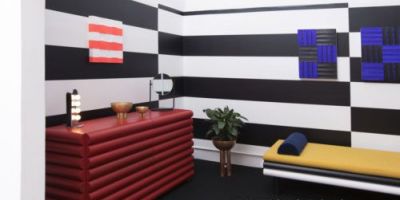约翰·迪克曼将生命、爱和自我怀疑的存在主义概念作为自助书籍的标题。小说的版面上没有文字,但其篇幅往往与封面上的信息直接相关,比如他的蓝书系列,上面写着:“好点子”是最小的;“8220”是中等的;“平庸点子”是中等的;“坏点子”是最大的。这位来自哥本哈根的艺术家同时也是一名执业心理治疗师,他意识到语言在艺术和治疗中都是一种强有力的工具。他在哥本哈根的Faurschou基金会的一份声明中解释说:“恰当的词语就像良药。”他所选择的措辞既幽默又睿智,常常用几个词来切中事实的要害,除了书之外,戴克曼还在唱片套、木盒和公文包上描绘了尖锐的信息。








Johan Deckmann (previously) presents existential notions of life, love, and self-doubt as self-help titles on hand-painted books. The fictio
nalized novels co
ntain no words on their pages, however their size often directly correlates to the messages on the front covers, such as his series of blue books, which read “Good ideason the smallest, “Mediocre ideason the mid-sized work, and “Bad ideas,on the largest.The Copenhagen-ba
sed artist is also a practicing psychotherapist who recognizes how language can be a powerful tool in both art and therapy. “The right words can be like good medicine,” he explained in a statement for the Faurschou Foundation in Copenhagen. His chosen phrases are both humorous and wise, often cutting to a deep truth with just a handful of words like his title “How to search forever for what is already inside.”In addition to books, Deckmann also paints poignant messages on record sleeves, wooden boxes, and briefcases. He recently had an exhibition at the Arp Museum in Remagen, Germany titled “It Takes Time, It’s Risky and It Might Last Forever” which closed in mid-July. You can see more of his works on his website and Instagram.
















 22
22
 设计欣赏
设计欣赏
 行业资讯
行业资讯
 设计欣赏
设计欣赏
 设计欣赏
设计欣赏
 设计欣赏
设计欣赏
 设计欣赏
设计欣赏
 设计欣赏
设计欣赏
 设计欣赏
设计欣赏